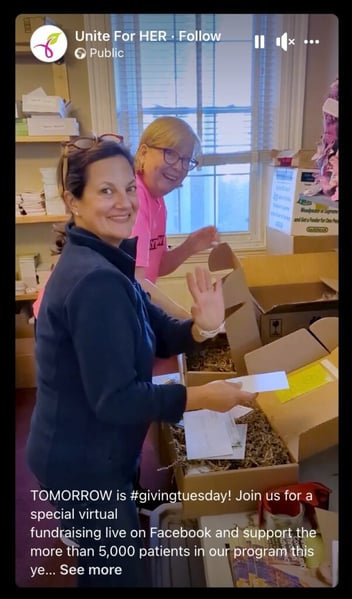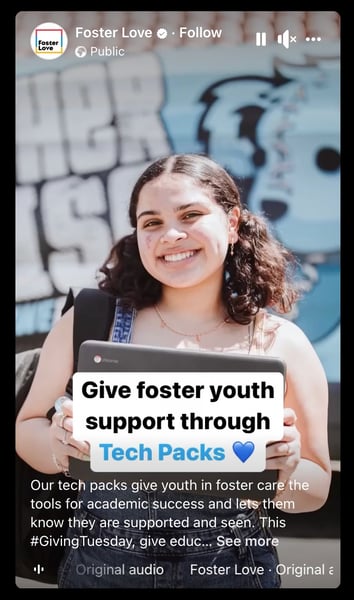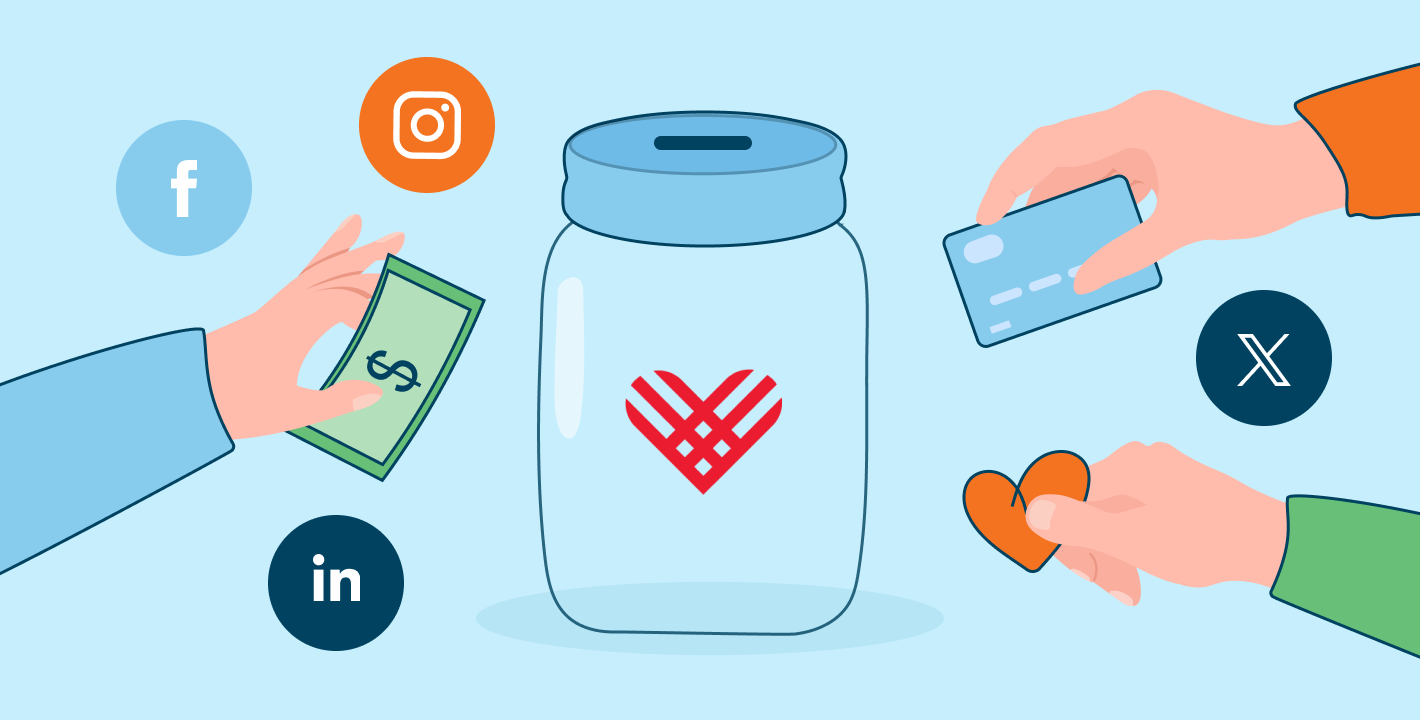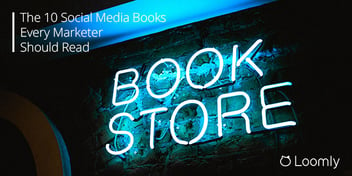Giving Tuesday Social Media Posts: 21 Tips for 2023
Last year, the total funds raised for communities, causes, and non-profits on one day in the US alone reached $3.1 billion. That’s a staggering figure. What’s more, funds raised on Giving Tuesday continue to rise, with increases of 25% from 2020 to 2021 and 15% from 2021 to 2022. Giving Tuesday has become so much more than the small grass-roots movement that started in 2012 to balance the consumerism of the holiday season. It’s now a fundraising powerhouse involving 85 countries worldwide, giving non-profit organizations an amazing opportunity to raise funds and gain new supporters.
So, to help you use this opportunity, we’ve provided examples of some great Giving Tuesday social media posts and 21 tips to help you run a successful social media campaign in 2023.

Manage all your social media accounts in one place.
Craft, schedule, & auto-post content to all your social channels, then track analytics and manage interactions from a single, easy-to-use dashboard.
1. Plan ahead
Raise your online presence: Give yourself plenty of time to plan for a successful campaign. Raise your online profile well in advance by keeping all your social media profiles active with relevant, engaging posts. Consider partnering with influencers or other businesses in a similar field to increase your visibility.
Set clear goals for your campaign: Decide on specific fundraising targets or goals for audience engagement.
Create a dedicated Giving Tuesday page: This will give you a centralized location to post relevant information about Giving Tuesday. You can use it to build momentum leading up to the event and provide a place to start taking donations.
Prepare with relevant resources: Get some Giving Tuesday resources, such as the templates, logos, and graphics provided in the Giving Tuesday Fundraising Toolkit.
2. Build anticipation
Begin sharing your campaign details early. Don’t wait until just before the Giving Tuesday event to promote your campaign. Count down to the event with posts describing your plans and goals for your campaign. This way, you can build momentum, get people on board, and begin to raise awareness weeks in advance.
For example, Project LIFT primed their LinkedIn followers for their 2023 Giving Tuesday campaign seven weeks before the event:
3. Harness the power of scheduling
Plan and schedule your posts using quality content repurposed for each platform. Scheduling and auto-posting save time and means your posts go live even when you’re busy or unavailable to post manually. Using social media scheduling tools like Loomly, you can plan and auto-post on multiple profiles, including:
4. Create quality content
Post quality content that resonates with your audience to encourage engagement and inspire action. Make sure your posts are diverse and interesting using a variety of formats, such as compelling stories, photos, videos, and infographics. Don’t forget to use every opportunity to encourage your audience to share your content. Most importantly, try to connect emotionally with your audience and share the message of generosity, empathy, and community spirit that signifies Giving Tuesday.
For instance, The Riley Farm Rescue posted this heartwarming video to tell their story and let their audience know how they use funds raised to help their animals.
5. Engage your audience with appealing images
Use compelling, high-quality images to communicate your message.
Some ideas for posts with images could include:
- Photos of the people or communities who’ll benefit from donations
- Before-and-after shots illustrating the impact of donations
- Volunteers in action
- Portraits with quotes from those whose lives have been changed by your organization
- Thank you graphics
- Countdown images
- Behind-the-scenes photos
Also, be sure to update your social media profile images with Giving Tuesday branding to show your commitment to the event.
6. Make great videos
Video is one of the most powerful ways to tell a story about your cause and mission. Keep it concise to ensure your audience stays engaged from start to finish.
Some ideas for video posts include:
Going live: This is a fantastic way to engage with your supporters. You can take and answer questions on the spot and have a real-time conversation.
A peek behind the scenes: Give your supporters a glimpse into the heart of your organization and an insight into all the hard work you do. This can build trust and a connection with your audience.
For instance, this Facebook Reel from Unite For Her explains what the organization does while giving a behind-the-scenes look at the team’s work.

Make it funny: Most people love a bit of humor, so if you can incorporate this into your videos, it’ll go a long way to making them memorable and shareable.
For instance, this highly original video from LiNK, a charity for North Korean refugees, uses humor to convey a serious message:
7. Make the best use of hashtags
To make sure their posts are part of the global conversation, most businesses start by including the most widely recognized #GivingTuesday tag. But given that millions of posts use this hashtag in the run-up to Giving Tuesday, it’s a good idea to include more specific and less common hashtags, too.
You could, for instance, add the year, as in #GivingTuesday2023, or your country, as in #GivingTuesdayCanada. Research which hashtags are being used that are relevant to your cause and that aren’t too competitive to avoid getting lost among all the other Giving Tuesday posts.
The #unselfie hashtag has also been popular on Giving Tuesday and is used to demonstrate people participating in acts of kindness, as in this example below:
#ThankYou to everyone who has shown their support by sharing their #UNselfie. It warms our hearts knowing that we are working together towards a shared goal of building futures free from abuse. #GivingTuesday #GivingTuesdayCA #HaltonGives #BuildingHealthyFutures pic.twitter.com/6u3hPNxkcS
— Radius Child & Youth (@RadiusChild_Yth) November 30, 2021
Another creative way to use hashtags is to give your campaign a unique identity with its own specific hashtag. For example, GlobalGiving named its Giving Tuesday campaign “Move a Million” and used the hashtag #MoveaMillion to promote it.
Thank you so much for helping us #MoveAMillion. Together we helped raise $3.45M for 1942 projects. This #GivingTuesday wouldn’t be possible without people like you. We can’t thank you enough. Sincerely, Donna + the GlobalGiving team
pic.twitter.com/azGJatUb38
— GlobalGiving (@GlobalGiving) November 30, 2022
8. Gather user-generated content
Inspire others to contribute to your cause by collecting and posting content created by your supporters. This might include personal stories, photos, or videos of their own fundraising experiences or interactions with your organization. Encourage supporters to use a specific hashtag or tag your account so you can easily find and repost their content to your social media feed. This is a fantastic way to generate online engagement with your campaign.
9. Stand out from the crowd
Think of ways you can be creative and different so your campaign gets noticed. Here’s a fabulously inspiring example from the University of Victoria called “Project Add Sprinkles.” Note also how they used their own unique #addsprinklesuvic hashtag.
Create challenges and competitions to help your campaign stand out and gather more engagement.
For instance, “Make Debbie Do It” is a fun campaign run by Freedom Waters Foundation, which adds a fundraising challenge along with a bit of humor.
Asha Curran, CEO of GivingTuesday, states that giving is an inherently emotionally-based decision, and making an emotional connection with your potential donors is important. So, share powerful stories using compelling imagery and clear messaging that create emotional resonance with your audience and help you stand out.
10. Engage with your audience
Always acknowledge and respond to comments, questions, and messages to show your supporters that you’re listening and you appreciate them.
Social media management tools can be especially helpful here. For instance, you can use Loomly’s Interactions Management Tool to keep up with all your audience interactions on social media channels such as Facebook, X/Twitter, Instagram, and LinkedIn.
A great way to encourage your audience to engage is to create interactive content, such as surveys, quizzes, and live Q&A sessions.
11. Collect data
Track metrics from your Giving Tuesday campaign to get a complete picture of how well your campaign is performing. Monitor likes, shares, comments, click-through rates, and donations to gain insights into what’s working and what needs changing. This will give you a better understanding of your audience, allowing you to refine and improve your strategies in the future.
12. Promote your donation pages
Include links to your donation page in all your Giving Tuesday social media posts, and make sure they stand out enough not to get overlooked.
For example, in this Facebook Reel from the Marine & Research Education Society, the donation link remains visible and clickable throughout the video.

Include clear calls to action (CTAs) on your donate buttons, such as “Donate Now” or “Support Us Today.” Using direct CTAs with visible links will make donating straightforward for your followers and increase the chance they’ll contribute.
13. Show your progress
Keep your audience in the loop by putting a fundraising thermometer on your website and social media pages. This visual tool shows your audience how close you are to reaching your fundraising goals and can motivate people to donate.
Share updates, celebrate when fundraising progress milestones are met, and thank your donors during and after the campaign. Doing so will ensure your supporters feel appreciated and will be more likely to give you ongoing support.
14. Leverage the power of peer-to-peer fundraising
Peer-to-peer fundraising involves encouraging your current donors to raise funds on your behalf. This strategy can significantly increase your reach and, therefore, your donations.
Digital-first peer-to-peer fundraising is conducted online and is even more successful than physical peer-to-peer fundraising. In fact, survey results showed that digital programs raised nearly nine times more percentage revenue increases than physical and hybrid programs. So, it’s well worth encouraging your supporters to raise online funds on your behalf. Make it easy for them by giving them tools and resources to help.
15. Raise more by using price anchoring
Set a suggested starting donation amount to encourage your supporters to donate more to your fundraising campaign. This practice is known as “price anchoring.” Donors tend to donate more when they see a higher starting donation than when they see a lower one or no suggested donation amount.
16. Be positive
Avoid guilt-tripping and negative messaging in your social media content. Instead, celebrate every milestone met and focus on the benefits of your campaign.
Make your message positive and inspiring. For example, this Facebook Reel from Foster Love doesn’t dwell on the sadness of children in foster care but showcases the positive impact of the organization’s activities.

17. Show what you’re doing with the money
Show your audience exactly how you’re using the money you’ve raised. Narrate real-life stories of impact, describing actual people and events to make an emotional connection with your audience. This clearly shows your donors the direct impact of their contribution to your cause.
18. Showcase other ways to support
Some of your target audience may not be able to contribute to your cause financially. So, highlight volunteering opportunities and other ways in which they may be able to help out.
19. Convert your donors into monthly supporters
Turning your one-time donors into monthly donors will give you the best return on your fundraising efforts. In fact, compared to one-time donations, donors who set up recurring monthly donations give 42% more annually.
Tim Sarrantonio, international speaker and Director of Corporate Brand from Neon One, says to build your regular donor base, you should:
- Build a community and cultivate a sense of belonging
- Build trust with your community
- Give people emotional reasons to donate
- Prioritize understanding your donors, for example, by carrying out donor surveys
20. Carry on campaigning after the event
After the 24-hour social media buzz has died down is the perfect time to thank your donors through posts and personal messages. Tell your loyal followers about your success stories, how much you’ve made, and what you intend to spend it on. Engaging your audience in this way and making them feel appreciated will help turn your current supporters into long-time supporters.
For example, this X/Twitter post from the Gary Sinise Foundation tells their followers how much they’ve raised and gives them all a heartfelt thank you.
GREAT NEWS! We exceeded our #GivingTuesday goal by over 65%! Our friends @simplegreen matched the overflow of donations we received on GT. In total, we raised OVER $2,648,255! Thanks 2 @woodmenlife, @sunbeltrentals, @veteransunited, Simple Green & YOU for a record-breaking day! pic.twitter.com/i36RlRuo64
— GarySiniseFoundation (@GarySiniseFound) December 1, 2022
21. Analyze your data
Now that the main campaigning event is over, you should gather your data and use it to gain insights into what worked best and what didn’t. Social media tools such as Loomly can collect and analyze data and create reports, giving you clear and detailed information to inform your future fundraising campaigns.
Create your best campaign yet
By planning ahead and creating and posting amazing content using the tips outlined above, you can make 2023 your most successful Giving Tuesday campaign to date. And by using tools like Loomly to help you schedule posts and collect and analyze data, you can plan even more successful campaigns for the years to come.
To find out how Loomly can help you get the most from all your social media campaigns, try Loomly free for 15 days.



